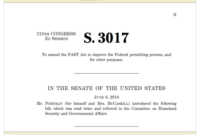Early congressional reviews of American Recovery and Reinvestment Act activity in core transportation sectors give agencies generally good marks, but lawmakers plan to keep a keen eye on stimulus spending as the flow increases. At recent House and Senate hearings, Transportation Secretary Ray LaHood said highway and transit sectors are showing the most progress. He also shed light on two big programs for which DOT hasn’t committed any money yet: $8 billion for high-speed rail and $1.5 billion for unspecified major projects. LaHood praised California’s rail plans and wants to fund work in several other corridors. He also said he’d like to see the $1.5-billion program emphasize port projects.

DOT has made $44.8 billion of its $48.1 billion in stimulus aid available to states and localities and obligated more than $9 billion for specific projects, LaHood told the House Transportation and Infrastructure Committee on April 29. “While there is much work remaining, I believe we have already achieved enormous success,” he said.
As of March 31 work had started on 263 highway and transit projects, totaling $1.1 billion, the committee said. An additional 101 projects, worth $100 million, were under contract, and 1,380 projects, totaling $6.4 billion, were out for bid. “With a few exceptions, I am very pleased with the progress that has been made in the first 10 weeks since enactment of the Recovery Act,” said panel Chairman James Oberstar (D-Minn.).
Senate transportation appropriations subcommittee Chairman Patty Murray (D-Wash.) said at an April 30 hearing that DOT has met its deadlines. But, she said, there are “a lot of unanswered questions,” such as how DOT plans to allot high-speed rail and discretionary grants.
DOT will issue high-speed rail guidance by June 17 and plans stakeholders’ meetings, which an official says will take place in May. LaHood says the $8 billion is a way “to begin several corridor opportunities.” He noted California’s head start, with a $9.95-billion rail bond issue approved in 2008. “I have no doubt that they will be at the top of the list,” he said.
DOT is awaiting White House approval of proposed criteria for the $1.5-billion program. LaHood told the House committee the act has large sums for roads, transit, rail and airports, so for the $1.5 billion, “Our thinking is we should really be looking at ports.”
Environmental Protection Agency Administrator Lisa Jackson told Oberstar’s panel EPA has distributed about 25% of $6 billion in stimulus State Revolving Funds for water projects. But, she said, “very little” of EPA’s other $1.2 billion in stimulus aid “is on the street.”



